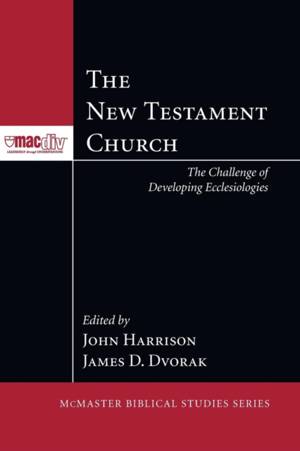
- Afhalen na 1 uur in een winkel met voorraad
- Gratis thuislevering in België vanaf € 30
- Ruim aanbod met 7 miljoen producten
- Afhalen na 1 uur in een winkel met voorraad
- Gratis thuislevering in België vanaf € 30
- Ruim aanbod met 7 miljoen producten
Zoeken
The New Testament Church
The Challenge of Developing Ecclesiologies
€ 56,95
+ 113 punten
Omschrijving
Christian communities today face enormous challenges in the new contexts and teachings that try to redefine what churches should be. Christians look to the New Testament for a pattern for the church, but the New Testament does not present a totally uniform picture of the structure, leadership, and sacraments practiced by first-century congregations. There was a unity of the Christian communities centered on the teaching that Jesus is the Christ, whom God has raised from the dead and has enthroned as Lord, yet not every assembly did exactly the same thing and saw themselves in exactly the same way. Rather, in the New Testament we find a collage of rich theological insights into what it means to be the church. When leaders of today see this diversity, they can look for New Testament ecclesiologies that are most relevant to the social and cultural context in which their community lives. This volume of essays, written with the latest scholarship, highlights the uniqueness of individual ecclesiologies of the various New Testament documents and their core unifying themes.
Specificaties
Betrokkenen
- Uitgeverij:
Inhoud
- Aantal bladzijden:
- 326
- Taal:
- Engels
- Reeks:
Eigenschappen
- Productcode (EAN):
- 9781608999989
- Verschijningsdatum:
- 1/05/2012
- Uitvoering:
- Paperback
- Formaat:
- Trade paperback (VS)
- Afmetingen:
- 152 mm x 229 mm
- Gewicht:
- 453 g

Alleen bij Standaard Boekhandel
+ 113 punten op je klantenkaart van Standaard Boekhandel
Beoordelingen
We publiceren alleen reviews die voldoen aan de voorwaarden voor reviews. Bekijk onze voorwaarden voor reviews.







